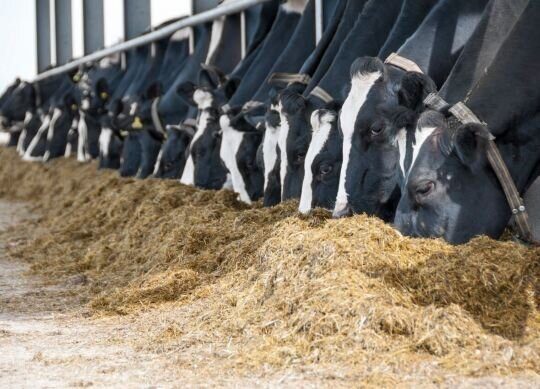Protein and Amino Acid Nutrition of Fresh Cows
Dr. Alex Tebbe, Former PhD student, and Dr. Bill Weiss, Professor, Department of Animal Sciences, The Ohio State University:
We recently completed a trial evaluating how dietary protein and amino acid supplementation affected production during the first 3 or 4 weeks of lactation and to determine how production was affected after treatments stopped (i.e., carry-over effects). The forage in the diets was a blend of about 68% corn silage and 32% alfalfa. The control diet (CONT) contained 17% crude protein (CP) and the concentrate was mostly corn grain and soybean meal. The second treatment (SOY) contained 20% CP with the additional protein coming mostly from treated soybean meal. The third diet (BLEND) also contained 20% CP but the additional CP came from a blend of soybean meal, treated canola meal, corn gluten meal, and rumen protected amino acids (the amino acid profile was formulated to mimic that of casein). The experiment contained another treatment that included several byproducts, but it will not be discussed in this article. When we increased CP in SOY and BLEND, we removed some corn grain and soybean hulls. All diets contained supplemental methionine from a rumen protected source. Cows were fed the treatment diets starting immediately after calving and continued until 25 days in milk, at which time all cows were switched to a typical high cow diet until 92 days in milk. We evaluated diet effects on both first lactation animals and older cows. The major findings were:
- Both first lactation and older animals consumed more dry matter during the first 25 days of lactation when fed BLEND compared to the SOY
- Feeding 20% CP in the fresh period increased energy corrected milk (ECM) for both first lactation and older cows compared to CONT, but source of the extra protein did matter.
- During the carryover period (all cows were fed the same diet), first lactation cows that were fed the 20% CP during the fresh period produced similar amounts of ECM as cows fed CONT during the fresh period. For mature cows, feeding the SOY treatment may have reduced ECM yield during carryover, whereas feeding the BLEND increased ECM during carry over period.
The bottom line is that feeding a high protein diet (20% CP) with a good balance of amino acids for the first 25 days of lactation results in more ECM during the first 92 days of lactation than feeding a 20% protein diet not balanced for amino acids or feeding a diet with 17% CP during the fresh period. For first lactation cows, fresh cow treatment did not have significant effects on ECM yields across the first 92 days in milk.
Practical Implications from Nobis Agri Science:
All animals benefitted from increasing crude protein to 20% in the fresh period, and mature animals benefitted more from using additional protected amino acids. If fresh heifers and fresh cows are in different pens, we can optimize how we feed additional protected amino acids to get the best ROI by only feeding to the mature cows. There is a positive carryover effect of this method – when on the same ration the groups mentioned above produced more ECM than animals fed 17% CP in the fresh period. When moved out of fresh pens and into the high groups we can prepare the cows to produce more milk on the same feed.



